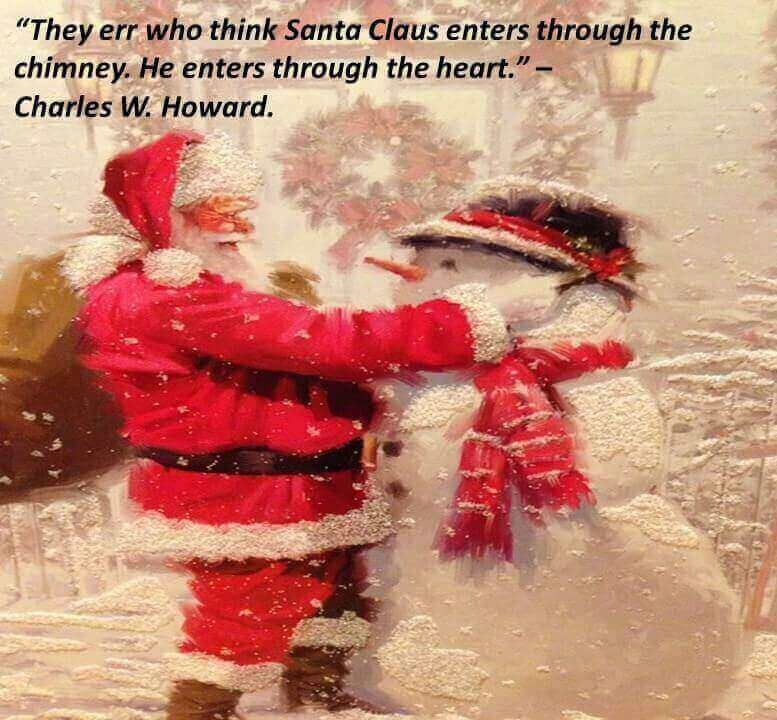“Christmas is always a problem for the man who has to convince his kids that there is a Santa Claus, and his wife that there isn't.” - Evan Esar (American Humourist)
Leaving aside trifling problems like the one discussed above, almost everyone would agree that Christmas is a time of happiness and celebration. And as far as the dilemma of the man concerned in the above quote is concerned, it may have been among other reasons, due to the fact that although most people believe Santa Claus does not exist, he is indeed inspired by a great man who did exist a long time back. This article here is about the history of Santa Claus, which very few people know about.
Before going into the history of Santa Claus, it is important to understand that in the 21st century, we know him as a jolly old man with a long beard and a shiny red dress, who lives in North pole with his wife. He supposedly spends his whole year making toys, along with the help of a team of elves. Finally, he is known to fly around the world in a single night, much before Superman arrived in the scenario.
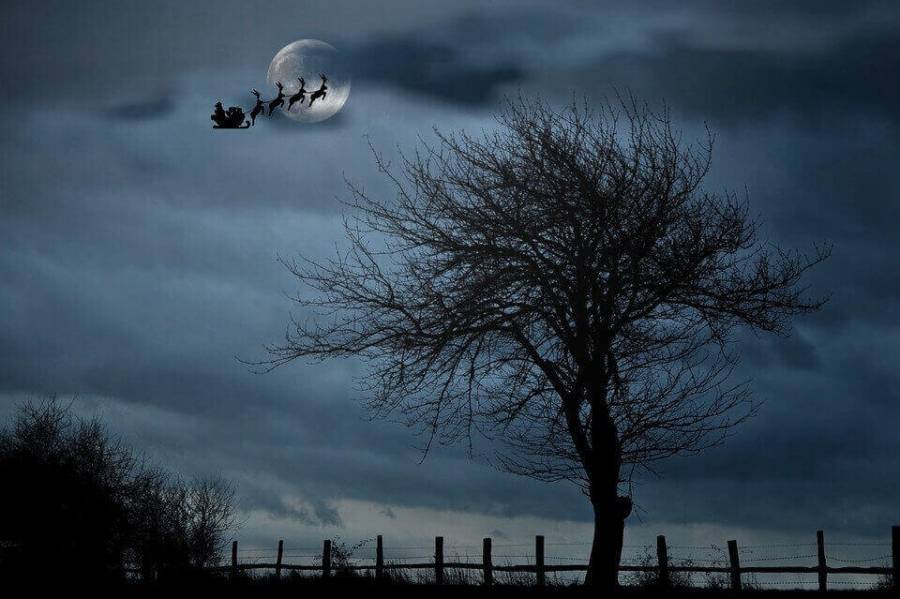
On Christmas eve Santa finally loads these toys and other gifts into a sleigh (drawn by reindeers) and flies around the world, delivering gifts to good children, by entering their house by sliding down through the chimney. The children, in turn, leave milk and cookies, for the visiting Santa, as a sign of gratitude & goodwill for the visiting guest.
Unfortunately, all adults realize that there is no real Santa Claus and quite often it is a father who plays a Santa Claus for the children & sometimes it is some other hired help. However, Santa Claus or the person who was the inspiration behind the figure representing universal friends of children everywhere was a very real person, and the history of Santa Claus started at a time when Christianity was still at its early stages and the modern notion of Christmas had not yet evolved.
Although when it comes to the real history of Santa Claus there is more than one person (and we shall go through them one by one) who is believed to have inspired the famous character associated with Christmas, the strongest association is with Saint Nicholas – a religious Christian Bishop who lived in the 4th century AD.
Saint Nicholas of Myra was the Christian Bishop in the city of Myra, which is located in modern-day Turkey. Born on 15 March of 270 AD, to a wealthy family of Greek merchants in Patara, a city in modern Turkey, his destiny was decided at a young age by his uncle, who at the time was the bishop of Myra, and ordained him as a priest. St Nicholas of Myra would later become Bishop at his Uncle’s Church in Myra, after a few unexpected turns of events.
After the death of his parents, he inherited a large amount of money, which had belonged to his parents. However, the kind-hearted Saint Nicholas of Myra decided to use this money for helping and improving the living conditions of the downtrodden and the poor, which would set him apart from others and would later result in his sainthood.
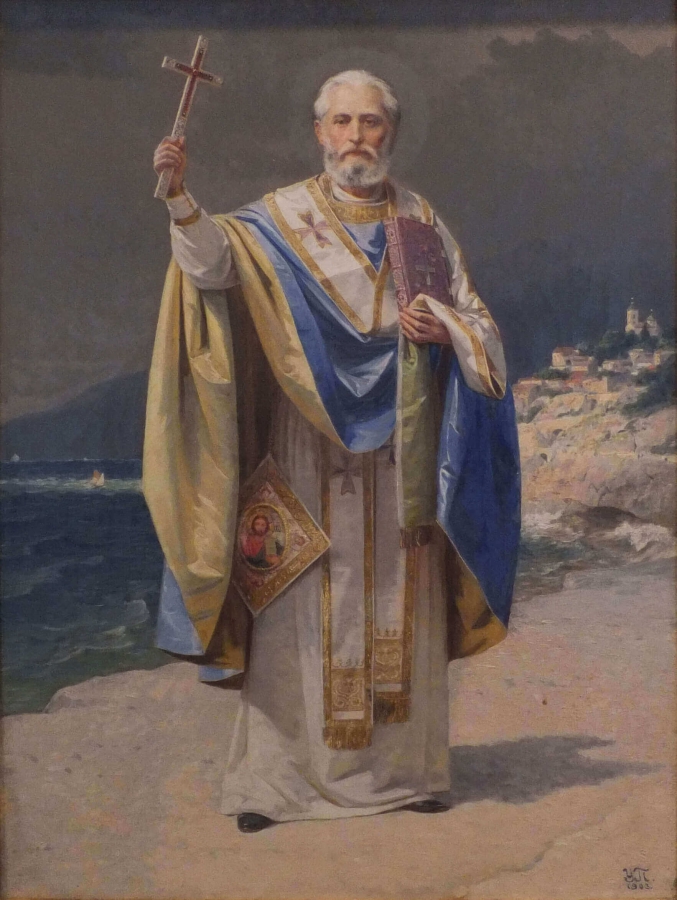
As one of the early Bishops of Christianity, St Nicholas of Myra also faced his share of problems from the Roman empire when he was put into the prison during the persecution of Diocletian – which was characterized by the most severe persecution of Christians by the Roman empire. However, he would later be freed by the Roman emperor – Constantin.
He also attended in 325 AD the First Council of Nicaea – which was a council of Christian bishops convened in Nicaea (an ancient town, which at present is in Turkey) by the Roman Emperor Constantin I; which was of considerable significance at the time. St Nicholas of Myra finally died on 6 December 343 A.D. & December 6 has been named on his honor as Saint Nicholas Day (with the evening of 5th December being known as Saint Nicholas Eve).
Many years after his death, St Nicholas Church was built in Myra under orders from the Eastern Roman emperor – Theodosius, over a site where the church where St Nicholas of Myra had served as a bishop, had stood. The remains of St Nicholas were also shifted later to a sarcophagus in the newly built church.
In 1087 A.D. when the influence of Seljuk Turks was steadily growing in the area, a group of merchants from the Italian city of Bari removed the major bones of St Nicholas’s skeleton from his sarcophagus and brought it to their hometown where they remain enshrined to this day in Basilica di San Nicola – a church specifically designed for the purpose. The minor fragments of the bones which were left behind in Myra were later removed by Venetian sailors during the first crusades and brought to Venice and placed in San Nicolo al Lido church.
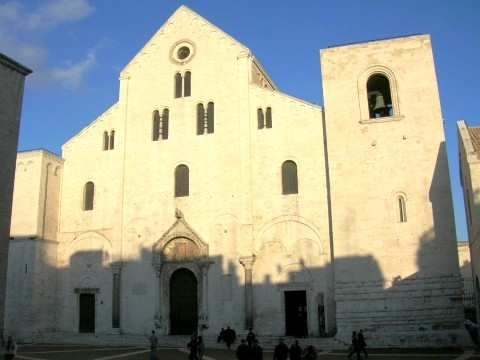
Shifting of the remains of Saint Nicholas of Myra to Europe would make him a very well-known Christian saint in western Europe as news of many miracles performed by him, spread across the continent. By the time of Renaissance, St. Nicholas of Myra had become one of the most popular saints in Europe.
Although it has to be mentioned that it is quite certain that St Nicholas indeed had a very helpful nature and used his resources to help unfortunate people, however, the stories of supernatural miracles performed by him have been looked upon with skepticism, by many other people.
Due to his charitable actions and acts of miracle, Saint Nicholas of Myra would later become very famous among the people. Some of these certainly are worth mentioning.
1) The Story Behind Hanging Up Stockings to Put Presents
As the story goes, a long time back at the time of Saint Nicholas there lived a man with 3 grown-up daughters. The man was too poor to give his daughters a decent wedding. Without marriage and other sources of sustenance, there was a great likelihood that these 3 unfortunate sisters would be forced into prostitution.
St Nicholas of Myra felt pity for the family but too modest for taking any credit for helping people, one day he dropped a bag full of gold coins into the house (in which the poor family stayed) through an open window. The bag fell into a stocking that had been hanged by the fire to dry. This bag of gold was enough to save one of the girls.
Saint Nicholas dropped another bag the next night, which was able to save another girl. The father of the girls, who was surprised in such sudden reversal of fortunes, hid close to fire the next night. When St Nicholas came on the 3rd night to throw another bag of gold, he was spotted by the father who to his amazement found that it was Saint Nicholas of Myra, who was dropping the bag full of gold coins in secret so that nobody would trace the charitable actions to him.
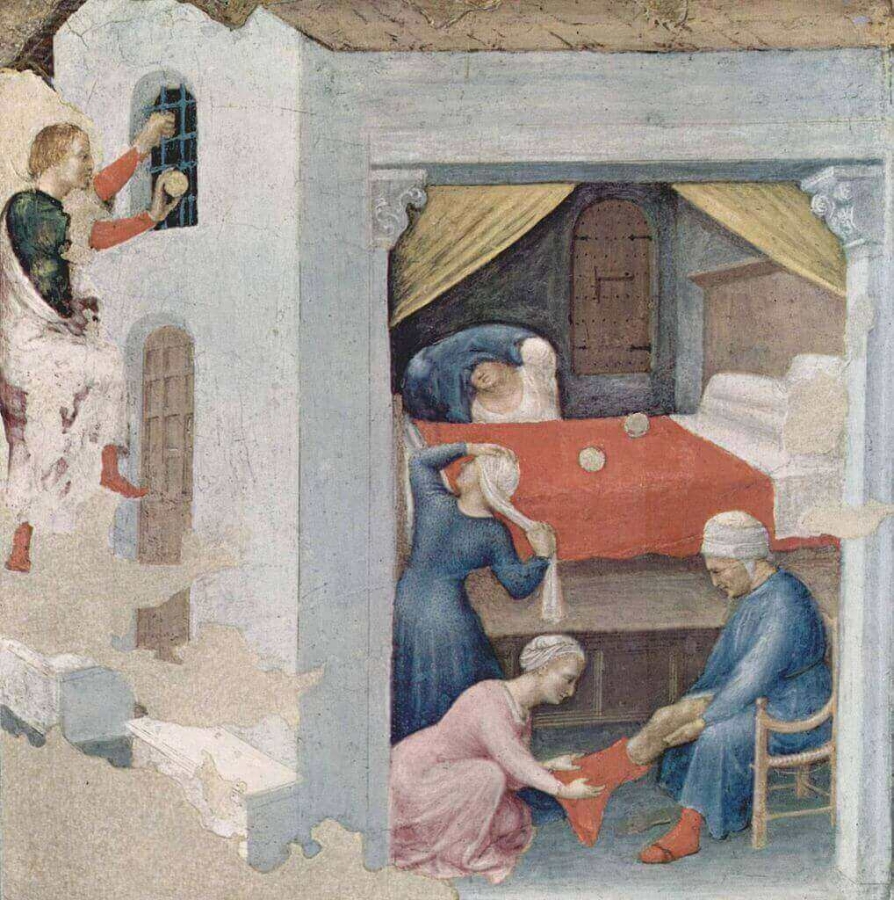
The grateful father fell on his knees and thanked Saint Nicholas, but the good Samaritan that he was, Nicholas forbade the father to tell anything about the incidence to anyone. However, the story spread and whenever any person in the future received any mysterious gift, the credit for it was given to the St Nicholas of Myra. This story also shows how the custom of hanging up stockings to receive presents first started.
2) Saint Nicholas of Myra Saves Three Innocents from Death
There is another very famous story that is closely associated with the life of St Nicholas of Myra. This story describes how Saint Nicholas of Myra saves three innocents from death. The 3 men in the context were innocent but were proclaimed guilty and condemned to death by the governor after one of the jurors had accepted a bribe and thus facilitated the wrongful conviction.
The story describes how St Nicholas of Myra arrived at the scene just before the sentence was to be carried out and he pushed the executioner’s sword to the ground and scolded the juror (who had accepted a bribe) and released the prisoners from their chains. Thus, Saint Nicholas of Myra saved innocent men who were falsely condemned to unwarranted death.
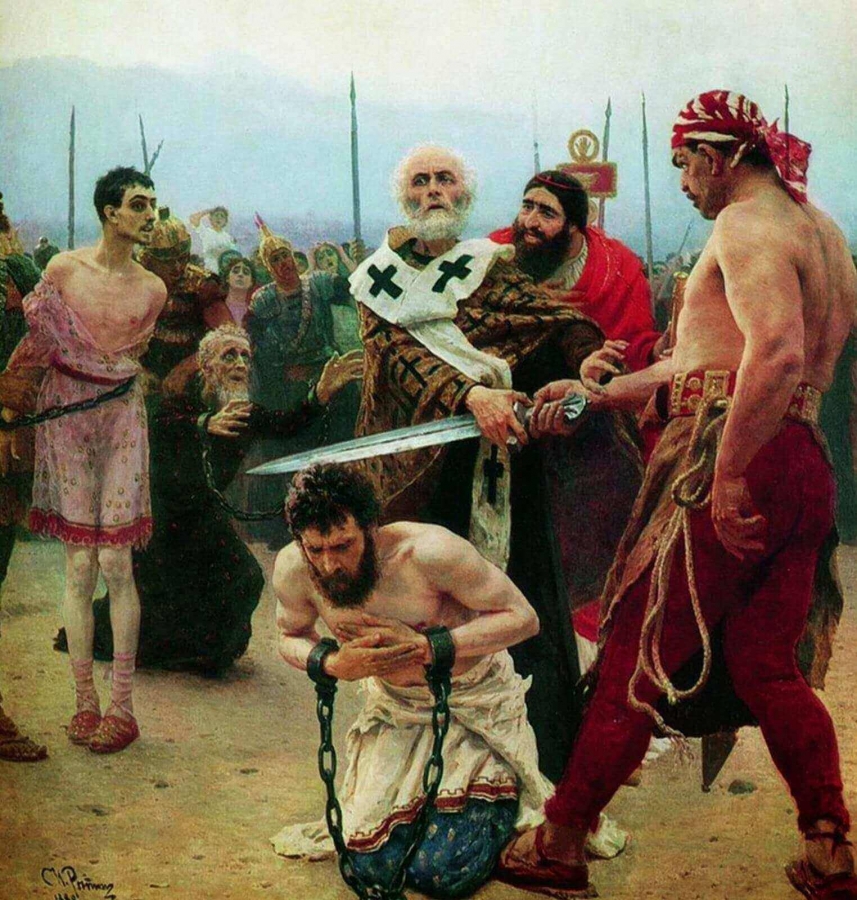
3) St Nicholas of Myra Saves Sailors
As the story goes some sailors of the time, were caught in a heavy storm off the coast of Turkey. They were in deep trouble and realized that without timely help their ship would surely sink beneath the giant waves raging all around them. They prayed to St Nicholas to help them, who suddenly arrived in the deck in front of them and ordered the sea to calm down. The storms vanished soon after and the sailors were able to navigate their ship safely to the harbor.
Because of the numerous charitable actions and miracles performed by him, he was later canonized and became famous as Saint Nicholas of Myra. He is known as – patron saint of the sailors, merchants, brewers, prostitutes, repentant thieves, children, archers, students and pawnbrokers in various countries across Europe.
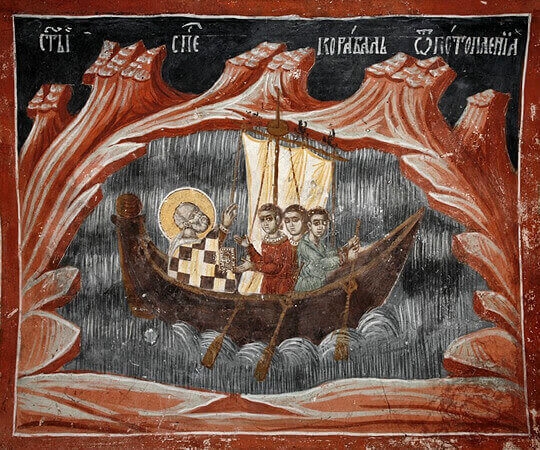
According to some sources, the Norse god – Odin may also have influenced to a certain extent the origin of Santa Claus. At the time of Vikings, Yule – a pagan festival was celebrated around the Winter Solstice on Dec 21 by the Germanic people for 12 days and nights of winter. The festival was closely related to the god -Odin and the modern Christmas on Dec 25, falls typically in the middle of the Yule. During Yule people would strengthen their relationships with friends & families by feasting, drinking, gift-giving and merry-making.
Odin has been described to have the ability to take on different appearances. However, one of the more popular forms was where he roamed the Earth dressed as a very old white-bearded traveler wearing a cloak with a broad-brimmed hat, which closely resembles the appearance of Santa Claus and may explain the origin of Santa Claus’s pagan background.
The 12 nights of Yule was also associated with the – Wild Hunt, where Odin raced across the night skies along with other gods, elves & beasts in a hunt against the ice giants and other forces of darkness. During the period of the wild hunt, the humans who had invoked the wrath of the gods would suffer from bad luck while those towards whom the gods were favorable received good fortune and gifts. Here it would be important to mention that the wild hunt was especially associated with the 12 nights of Yule, although it could occur in other winter nights too.
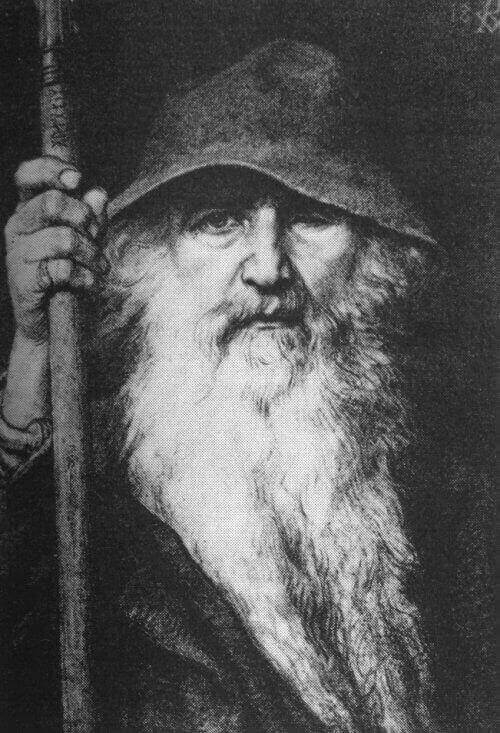
Santa Claus of modern-day uses a sleigh drawn by reindeer for travel. Odin of Norse mythology also had an 8-legged flying horse named Sleipnir which helped him move around. Some other similarities with Santa Claus are that –
1) Odin was a well-known gift giver to mankind. During Yule, children would leave their boot by the fireplace after filling them with sugar and hay. This was done with the intention that a tired horse of Odin – Sleipnir, would feast on this and Odin pleased with the children would leave small gifts and other treats in the boots of the children. This closely resembles the story of Santa Claus and placing stockings close to the fireplace.
2) Odin was all-knowing and knew how people everywhere behaved. His 2 ravens brought him the news about all that was happening in the 9 worlds and how the people were behaving. This decided who would need disciplinarian action and who should be rewarded with gifts & good fortune.
3) Like Santa Claus is called Father Christmas, Odin is also called Yule father, and as has been said the 2 festivals (Christmas & Yule) are celebrated around the same time of the year and they also share many other similarities.
4) The dwarfs and elves of Norse mythology were skilled workers, who could create wonderful things. Also known as Odin’s men, they made many small gifts for Odin to deliver.
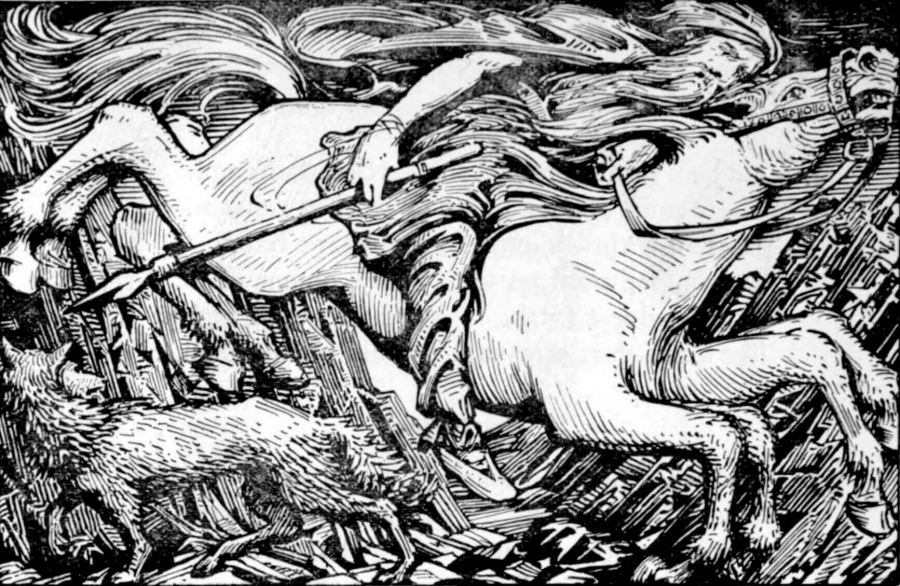
During the protestant reformation, St Nicholas of Myra and other Catholic saints were gradually pushed to the background in all the countries of Europe, except in Holland, where Saint Nicholas of Myra survived in people’s memory as Sinterklaas - a kind and wise old man with a long white beard, who dressed in a white dress, a red cloak and a has a red mitre (ceremonial headdress of the bishops) on his head and a staff in his hand. Here it would be important to mention that – Sinterklaas was a shortened form of Sint Nikolas (Dutch for Saint Nicholas).
The festivities of Sinterklaas starts on the 2nd Saturday of November (around the middle of November), whenhe arrives at a town of Netherland (every year a different harbor is chosen, so maximum children get a chance to see him) from Spain (where he supposedly lives) by a steamboat to spend 3 weeks in the country. The boat which brings him also contains gifts that Sinterklaas brings for children.
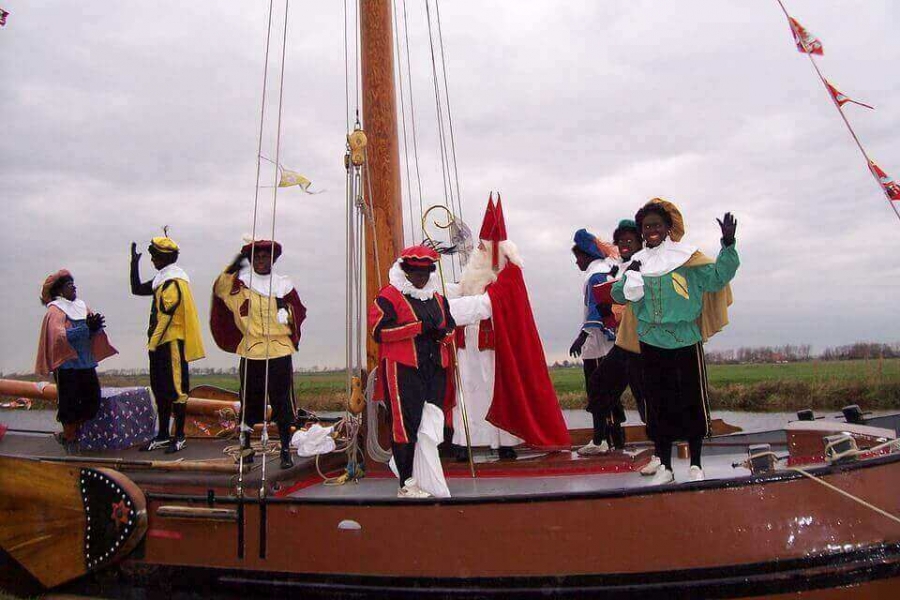
Sinterklaas is accompanied by a team of helpers/servants called “Zwarte Pieten” (Black Peters – having typical features of a blackened face). Once Sinterklaas and his servants reach the town, the church bells of the town are rung in celebration. On land, Sinterklaas rides a white horse leading his entourage through the town.
Sinterklaas who historically predates modern Santa Claus serves many common functions as his modern counterpart (Santa Claus). Sinterklaas has a book where records of all that the children have done in the past year are kept to judge who has been good and who behaved badly.
Those who have been good would receive a gift from Sinterklaas and the bad ones would receive a variety of punishments. This could range from receiving lumps of coal or to be put in a sack and taken to Spain (on Sinterklaas’s return voyage) for a year by Zwarte Pieten to teach the children a lesson for the future, so they would always be well behaved.
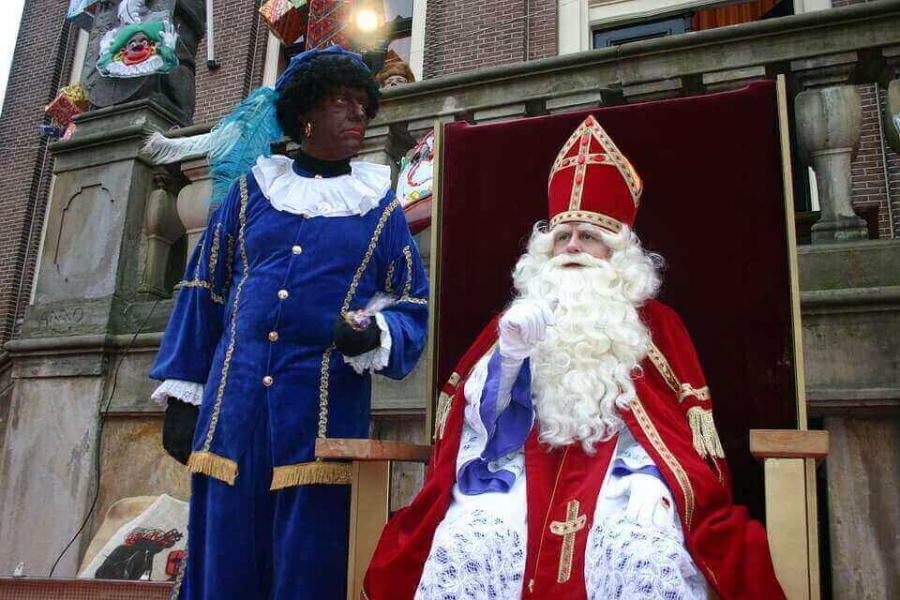
Sinterklaas like his modern counterpart of Santa Claus, visited the children’s homes at night (although the time is not of Christmas eve) riding the rooftops of the houses in his horse. The children on their part leave a shoe beside the chimney (containing some hay & carrots for the horse of Sinterklaas) once or twice a week, during the stay of Sinterklaas.
This goodwill ensures that Zwarte Pieten climbs down through the chimney (whereby the dark soot blackens their face) and puts some candy & other gifts for the children, in the shoes, after collecting food for the horse from it.
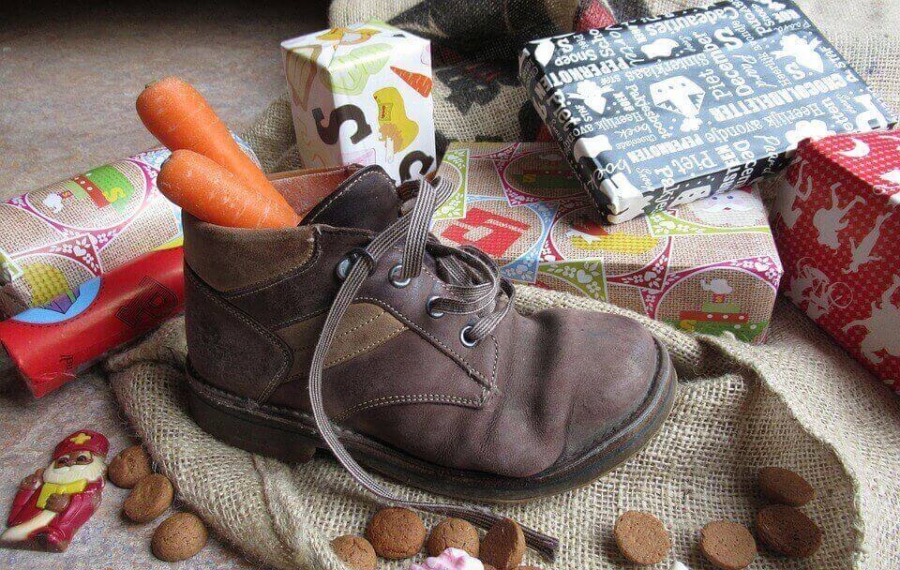
Once the festivities are over, Sinterklaas leaves the Netherlands on 6th December by steamboat via the entrance of the port of Rotterdam, as he travels back to Spain. Now, why does the story say that Sinterklaas lives in Spain? It is because, in 11th century AD, the body of St Nicholas of Myra (at least the major bones present at the time) was reburied at Bari, Italy which was under Spain, when the celebrations became popular.
Finally, it needs to be mentioned that Sinterklaas has nothing to do with Christmas. Sinterklaas parties are celebrated on 5th December in the Netherlands (St Nicholas Eve) and on 6 December in Belgium. Christmas is also celebrated in the Netherlands as well as Belgium, but in these countries, Sinterklaas is different from Santa Claus. In the Netherlands, Santa Claus is known as Christmas man or “Kerstman” and the children believe that he comes from Lapland in Finland to deliver some more presents.
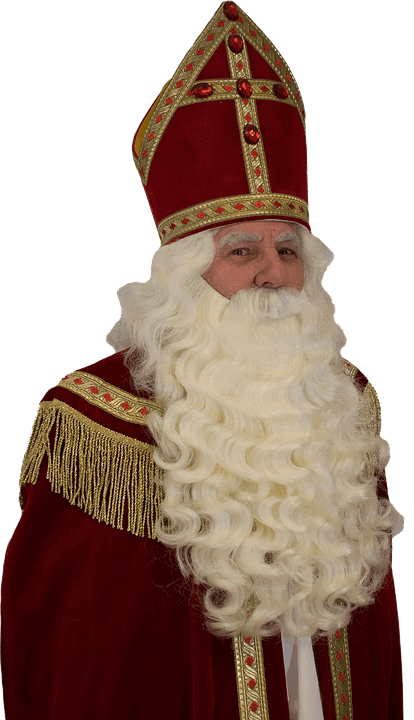
The modern version of Santa Claus that we see at Christmas nowadays originated in America. As people from Europe moved to the New World, they brought their traditions with them. These also included the Dutch who brought Sinterklaas and festivities associated with him to the new world, especially to New Amsterdam (now New York City) to be more precise.
The origin of Santa Claus from this Dutch Sinterklaas would occur by the active participation of many English-speaking people over time in these festivals, and Sinterklaas would eventually become Americanised into Santa Claus. It was in 1823, that Clement Clarke Moore a Professor of Oriental & Greek literature of New York, wrote a 56-line poem called – “A Visit from Saint Nicholas”, which is popularly known in the modern age as – “The Night Before Christmas”.
The description of this poem, which would go on to become very popular in America, created the modern version of Christmas. Clement Clarke Moore would take inspiration from Saint Nicholas of Myra & Sinterklaas, the previously described Dutch version of Saint Nicholas.
Clement Clarke Moore would go on to introduce many new characteristic traits for the character of Santa, who would get a more modern look. Santa would now smoke a pipe occasionally, would be dressed in American fur, and could move through a chimney without any difficulty to drop gifts in the hanging stockings. He no longer had the seriousness of a priest but would be a jolly old elf with a white beard and a sack full of toys on his back.
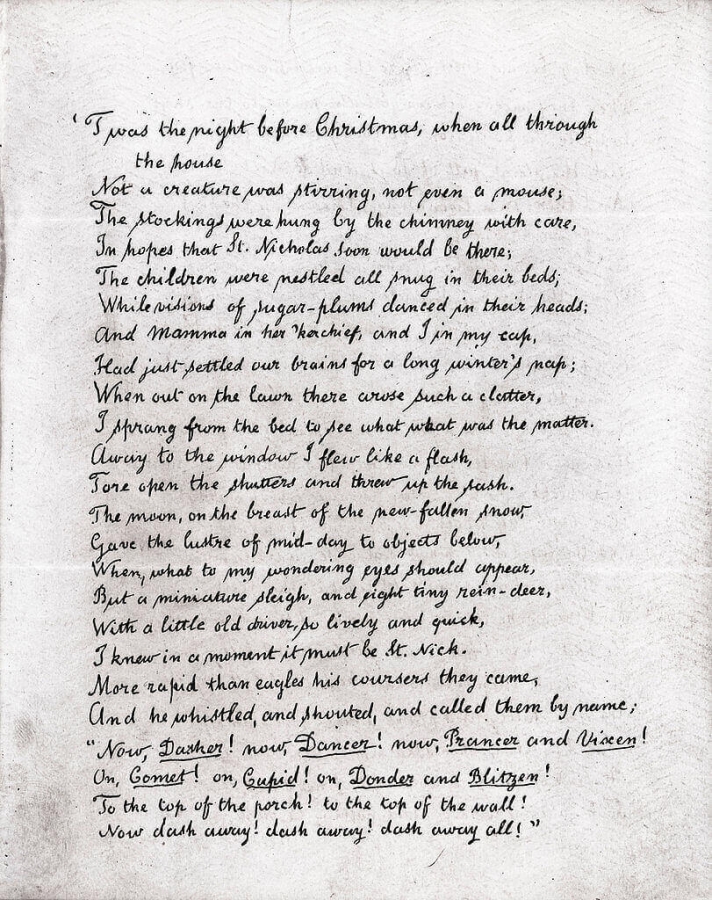
Santa would also get a sleigh drawn by 8 Reindeers, which would fly across the sky, taking Santa all over the world. All the 8 Reindeers had distinct names – Dasher, Dancer, Prancer, Vixen, Comet, Cupid, Donner and Blitzen. In 1939, Robert L May – a copywriter at the Montgomery Ward department store wrote a Christmas themed story to bring Christmas holiday traffic into his store. Here he would introduce a 9th young Reindeer named – Rudolph, having a large glowing red nose; who would be later included in the sleigh drawing Reindeer team, thanks to the incredible popularity that this story achieved.
Here it would be important to mention that in 1902, L Frank Baum came up with a story – “The Life and Adventures of Santa Claus”, where he describes 10 Reindeers in Santa’s sleigh all of which had different names than the 8 names of Reindeers that was described by Clement Clark Moore in his poem – “A Visit from St. Nicholas” written earlier.
In 1881, an artist named Thomas Nast added few more characteristic features to create the modern Santa of today, when he drew Christmas illustrations for Harper’s Weekly. Here Thomas Nast would add some more important modification to the previous image created by Clement Clarke Moore. The new Santa would be a large & chubby cheerful man with a long beard dressed in a bright red suit trimmed with white fur.
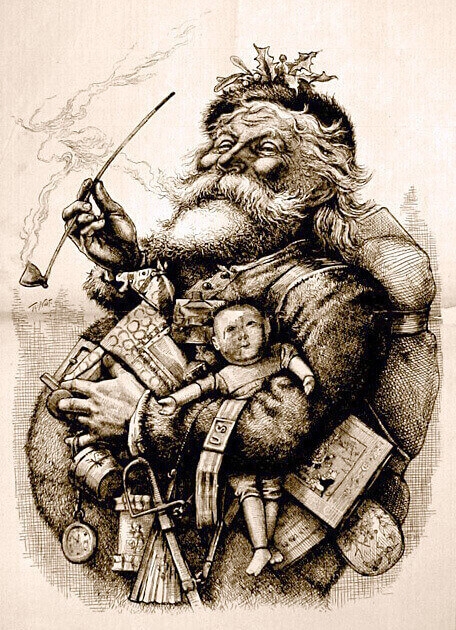
Thomas Nast would also give Santa a wife (although the wife of Santa Claus is mentioned for the first time in – A Christmas Legend, a short story written by Christian missionary James Reese in 1849) along with a North Pole accommodation & workshop with a team of dedicated elves to help him, who worked throughout the year making gifts & toys.
Santa would also start to receive letters from enthusiastic kids making various demands. Finally, Santa himself would get the ability to know the nature of different children, which would help him to make a naughty or nice list. These additions would finally create the loving Santa, that we know today.
Now it must be highly obvious that the Santa whom we think of as climbing down from the chimneys to enter the houses of people and putting gifts into the empty Christmas stocking hung beside the fireplace, took origin from a history of Santa Claus, that goes back many centuries.
The Santa Claus of the modern era is happily married, has a home in the North pole and has a team of elves to help in preparing gifts to be distributed to children. The jolly & friendly Santa Claus is a very far cry from a catholic priest who lived in the 4th century. However, the character of nobility, charitable disposition and spreading joy around are traits that have withstood the changes that occurred over the centuries, finally proving that the more we change the more we remain the same.
